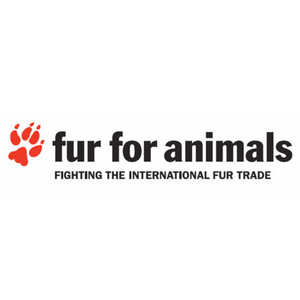"Victims of Vanity" - The Trapping of Wild Animals for Fur in the USA
In collaboration with:
In 2011 Tracks undertook a landmark investigation inside the brutal world of fur trapping in the United States in collaboration with Born Free and Respect for Animals. In 2016, our team went back into the field to conduct a follow-up investigation.
During our 2011 investigation, we uncovered for the first time in more than a decade the shocking cruelty and brutality involved in the trapping of wild animals for the fur trade. Born Free USA and Respect for Animals used this groundbreaking investigation to shed light on a horrific, highly unregulated, inhumane, and dangerous industry.
The trapping apologists accused Born Free of only showing extremely rare trapping incidents: accidents that are in no way representative of what they claim is a well-regulated, selective activity.
In 2016 we went back to the States to investigate further. Our undercover footage obtained once again revealed the truth of trapping. Common trapping practices remain as ruthless, dangerous, and archaic as we revealed five years earlier.
Our 2016 Findings:
Trapping in Protected Areas:
Adirondack Park is a six-million-acre park in upstate New York with a “Forever Wild” designation. Visitors come with their families, friends, and pets to enjoy the area’s wildlife and wild spaces and yet, within this pristine, protected area, our investigator followed a trapper as he trapped beavers and set more traps for coyotes, bobcats, mink, otters, and fishers.
Illegal Trapping:
Our footage reveals that even licensed trappers will regularly and knowingly step outside the law as it suits them, feeling secure in the broad lack of oversight and enforcement.
Dangerous Trapping:
By their very nature, traps are unable to control what they catch. In New York, it is illegal to place traps on public roads, but the areas under bridges are exempt, putting millions of visitors who travel over them at risk. In Iowa, the trapper set numerous leghold traps next to public roads, trails, and private homes and buildings.
Cruelty:
Simply put, traps are inherently cruel. They break bones, sever limbs, and crush organs, causing unrelenting pain and often gruesomely prolonged death. Even restraining a wild animal—removing the ability for ‘fight or flight’—causes intense stress. Depending on how long the animal is left to languish, he or she may be susceptible to hypothermia, thirst, starvation, and predation.
To watch some footage from the investigation click here.
Footage from these investigations and an interview with Tracks’ investigator Rich Hardy talking about harrowing scenes he captured can be seen in SLAY - a powerful new feature-length documentary uncovering the dark side of the fashion industry.
To date, our investigations of the trapping industry, include the most powerful footage ever taken!
Tracks Investigations has undertaken over 295 investigative film projects supporting over 40 conservation, environmental and animal protection NGOs since its inception in 2006. Learn more about how you can work with us here. To support our investigative work for animals, click here.






